Results 6,641 to 6,650 of 12094
Thread: Anandtech News
-
01-16-17, 07:25 AM #6641
Anandtech: Zotac Updates ZBOX mini-PCs with Kaby Lake: vPro, Thunderbolt, and More
As part of their pre-CES teaser, Zotac had talked about their mini-ITX GTX 1080 and their external Thunderbolt 3 graphics dock. They had also hinted about some updates to the ZBOX lineup, with some details about the ZBOX CI549 nano, a vPro-enabled passively cooled UCFF (ultra-compact form factor) PC with Thunderbolt 3 support. However, at their suite, we found that many of their existing ZBOX models will be getting a Kaby Lake update. Since Kaby Lake is a minor update in terms of features to Skylake, the Zotac really doesn't have much to work with compared to the Skylake models. Despite that, Zotac has introduced some new features into the ZBOX series - including vPro and Thunderbolt 3 support - that are not present in the Skylake versions.
Zotac markets their mini-PCs in multiple market segments - the E-series for gaming, the C-series for users interested in passively cooled systems, the M-series for certain PCs with active cooling in multiple form factors, the VR-series for virtual reality use-cases, the P-series for pocket-sized computers, and so on. The Kaby Lake updates are coming to the C-series, M-series, and E-series. While the C-series units come with the nano tag (with a 5in x 5in x 1.78in form-factor), the M-series come in either the regular ZBOX size (7.4in x 7.4in x 1.78in) or the nano size.
The three tables below summarize the specifications of the Kaby Lake mini-PCs announced by Zotac at CES 2017.
The most interesting one in the above table is obviously the Zotac ZBOX CI549 nano / MI549 nano. From the perspective of a home consumer, the most important update when compared with the Skylake-U C Series models is the availability of a Thunderbolt 3 port. Thunderbolt 3 brings a host of exciting expansion possibilities. In addition, Zotac seems to have retained the two USB 3.1 Gen 2 Type-C from the ASMedia ASM1142 controller.Zotac ZBOX nano C- & M-Series with Kaby Lake - Specifications Aspect CI527 nano
MI527 nanoCI547 nano
MI547 nanoCI549 nano
MI549 nanoProcessor Intel Core i3-7100U Intel Core i5-7200U Intel Core i5-7300U Memory 2x DDR4 SO-DIMM (Up to 32 GB / 2133 MHz) Graphics Intel HD Graphics 620 Disk Drives 1x 2.5" SATA III Networking (Wireless) Intel Dual Band Wireless-AC 8265
(2x2 802.11ac - 867 Mbps)Networking (Wired) 2x Realtek RTL8111G PCIe Gigabit Ethernet Adapters 1x Intel I-219V PCIe Gigabit Ethernet Adapter
1x Reaktek RTL8111G PCIe Gigabit Ethernet AdapterAudio 3.5mm Headphone and Microphone Jacks (Realtek ALC892-GR)
Capable of 5.1/7.1 digital output with HD audio bitstreaming (HDMI)Display 1x HDMI 2.0 / HDCP 2.2 (3840x2160 @ 60Hz)
1x DP 1.2 (3840x2160 @ 60 Hz)1x HDMI 2.0 / HDCP 2.2 (3840x2160 @ 60Hz)
1x DP 1.2 (3840x2160 @ 60 Hz) (muxed with Thunderbolt 3 Type-C)Miscellaneous I/O 2x USB 3.1 Gen 2 Type-C
5x USB 3.0 Type-A
1x SDXC Slot2x USB 3.1 Gen 2 Type-C
4x USB 3.0 Type-A
1x Thunderbolt 3 Type-C
1x SDXC SlotCooling CI Series - Fanless / Passively Cooled MI Series - Air Cooling / Single Fan Dimensions CI Series - 5.76in x 4.98in x 2.38in MI Series - 5.03in x 4.98in x 2.00in
The other important aspect of the ZBOX CI549 nano and the MI549 nano is that the Core i5-7300U is a vPro SKU, making it more suitable for use in business environments. Intel's UNITE technology is also supported for secure workplace conferencing. AMT is also available for IT administrators to remotely repair and maintain the systems. The vPro designation makes it necessary for one of the two LAN ports to be an Intel-branded one. The other mini-PCs being updated with Kaby Lake in the above table all use two Realtek adapters.
Gallery: Zotac ZBOX CI527 nano





Gallery: Zotac ZBOX CI547 nano





Gallery: Zotac ZBOX CI549 nano





Gallery: Zotac ZBOX MI527 nano





Gallery: Zotac ZBOX MI547 nano





Gallery: Zotac ZBOX MI549 nano





The interesting ZBOX here is the MI572, with the 35W TDP LGA processor - the Core i7-7700T. Using a desktop PCH allows Zotac to include Thunderbolt 3 as well as a rich set of I/Os compared to the others launched at CES.Zotac ZBOX M-Series with Kaby Lake - Specifications Aspect MI526 MI548 MI572 Processor Intel Core i3-7100U Intel Core i5-7200U Intel Core i7-7700T Memory 2x DDR4 SO-DIMM (Up to 32 GB / 2133 MHz) Graphics Intel HD Graphics 620 Intel HD Graphics 630 Disk Drives 1x 2.5" SATA III 1x 2.5" SATA III
1x M.2 2242/2260/2280 PCIe 3.0 x4 / SATA IIINetworking (Wireless) Intel Dual Band Wireless-AC 8265
(2x2 802.11ac - 867 Mbps)Networking (Wired) 2x Realtek RTL8111G PCIe Gigabit Ethernet Adapters 1x Reaktek RTL8111G PCIe Gigabit Ethernet Adapter Audio 3.5mm Headphone and Microphone Jacks (Realtek ALC892-GR)
Capable of 5.1/7.1 digital output with HD audio bitstreaming (HDMI)Display 1x HDMI 1.4b (3840x2160 @ 30Hz)
1x DP 1.2 (3840x2160 @ 60 Hz)1x HDMI 2.0 / HDCP 2.2 (3840x2160 @ 60Hz)
1x DP 1.2 (3840x2160 @ 60 Hz)Miscellaneous I/O 1x USB 2.0 Type-A
4x USB 3.0 Type-A
2x USB 3.1 Gen 2 Type-C
1x SDXC / USB 3.0 Combo Slot1x USB 2.0 Type-A
4x USB 3.0 Type-A
1x Thunderbolt 3 Type-C
1x USB 3.1 Gen 2 Type-C
1x SDXC / USB 3.0 Combo SlotCooling Air Cooling / Single Fan Dimensions 7.4in x 7.4in x 2.02in
In the E-series, Zotac has only one updated SKU - the EN1070K, a Kaby Lake version of the EN1070. We would have liked them to move the MAGNUS EN1080 to Kaby Lake, given the pin compatibility between Skylake and Kaby Lake, and the fact that the PCH used for the Skylake board could work with Kaby Lake too.
Given the nature of the mini-PC market, and the updates offered by Kaby Lake, we believe Zotac is doing the right thing by not going in for a complete overhaul of their Skylake-based offerings in this space. It is great to see dual LAN ports spread to more models, though we would prefer Intel adapters to the Realtek ones that are currently in the units. Zotac must also be appreciated for adding the LSPCon to the BOM to enable HDMI 2.0 and HDCP 2.2 capabilities. The Thunderbolt 3 feature, as well as the vPro capabilities, will definitely expand the target market for these systems. That said, some of the shortcomings such as the thermal design of the C-series (which is the same as that of the Skylake C-series) and the placement of the USB ports in the chassis (that we pointed out in our review of the Zotac ZBOX CI523 nano) don't seem to have been addressed. Hopefully, Zotac can tweak a few things before the final market release.Zotac ZBOX MAGNUS EN1070K - Specifications Aspect EN1070K Processor Intel Core i5-7500T Memory 2x DDR4 SO-DIMM (Up to 32 GB / 2133 MHz) Graphics NVIDIA GeForce GTX 1070 (8GB GDDR5) Disk Drives 1x 2.5" SATA III
1x M.2 2242/2260/2280 PCIe 3.0 x4 / SATA IIINetworking (Wireless) Intel Dual Band Wireless-AC 8265
(2x2 802.11ac - 867 Mbps)Networking (Wired) 2x Realtek RTL8111G PCIe Gigabit Ethernet Adapters Audio 3.5mm Headphone and Microphone Jacks (Realtek ALC892-GR)
Capable of 5.1/7.1 digital output with HD audio bitstreaming (HDMI)Display 2x HDMI 2.0 / HDCP 2.2 (4096x2160 @ 60Hz)
2x DP 1.3 (3840x2160 @ 60 Hz)Miscellaneous I/O 2x USB 2.0 Type-A
2x USB 3.0 Type-A
1x USB 3.1 Gen 2 Type-C
1x USB 3.1 Gen 2 Type-A
1x SDXC SlotCooling Air Cooling Dimensions 8.27in x 7.99in x 2.45in
Related Reading:
- MSI Cubi 2 Kaby Lake UCFF PC Review
- Calyos NSG Cube: Passively Cooled SFF PC with Intel Core and GeForce GTX 1060
- Zotac ZBOX MAGNUS EN1080 SFF PC Review: A Premium Gaming Powerhouse
More...
-
01-16-17, 10:28 AM #6642
Anandtech: Mushkin Launches Reactor Armor 3D and Triactor 3D 2TB SATA SSDs: 3D NAND,
Mushkin at CES demonstrated its new SSDs in 2.5”/7 mm form-factor aimed at mainstream PCs with a SATA interface. The new Reactor Armor 3D and Triactor 3D use 3D NAND flash memory, the same controller from Silicon Motion and offer nearly similar performance. The main difference is that the former use 3D MLC, whereas the latter uses 3D TLC memory.
The NAND flash industry is transitioning to various 3D NAND architectures that enable higher densities, lower per-bit costs and higher endurance compared to planar flash made using very thin process technologies. So far it has not been easy for independent makers of drives to secure a supply of 3D NAND memory because some manufacturers are cutting down the share of produced flash they sell on the open market, whereas 3D NAND from others does not suit SSDs well. In the recent months ADATA was the only independent supplier of drives to offer 3D NAND-based drives, but as we observed at CES, the situation is about to change. Mushkin is another company to announce a lineup of SSDs featuring 3D NAND and targeting different market segments, from entry-level to the high-end. Unlike ADATA, Mushkin is announcing all of its 3D NAND SSDs at once, which implies that the company can get enough chips for different kinds of drives.
Mushkin’s Reactor Armor 3D and Triactor 3D SSDs are based on Silicon Motion’s SM2258 controller, but while the former uses 3D MLC NAND, the latter uses 3D TLC NAND from an undisclosed manufacturer. The SM2258 controller has four NAND flash channels, LDPC ECC technology, a SATA interface, a DRAM buffer support as well as pseudo-SLC (pSLC) caching in order to maximize SSD performance. At present, the SM2258 is virtually the only market-ready third-party SSD controller with that supports 3D NAND (technically speaking, the SM2256 also supports 3D NAND, but drive makers prefer the more advanced controller so to address the higher end of the SSD spectrum), so Mushkin’ s choice is not surprising if the company needs rapid time-to-market (which is also why it does not wait for Phison's PS5008-E8). What is even more interesting is that Mushkin is considering to add 3D NAND-based drives to the Reactor lineup that uses the SM2246EN controller (this one is qualified for 3D MLC as well). It does not look like the company has made any final decisions, but it is considering such possibility in a bid to continue addressing the entry-level segment with the Reactor lineup.
Mushkin does not disclose the name of its 3D NAND flash supplier, but we have a reason to believe that this is Micron. SanDisk and Toshiba are shipping their 64-layer BiCS NAND inside their removable media products and promise to use this memory for their SSDs. But as of now, 64-layer BiCS chips have not been qualified for SSDs. 3D NAND from SK Hynix is also available for various products, but it has not been qualified for SSDs just yet.
The Reactor Armor 3D SSDs will be available in 240 GB to 1920 GB configurations, whereas the Triactor 3D drives will feature 256 GB to 2 TB capacities. The former family will take advantage of MLC and offer slightly better endurance albeit at a higher price, whereas the latter lineup will be more aggressively priced thanks to cheaper memory. At the same time, it is noteworthy that both product lines include high-capacity (~ 2 TB) drives, an indicator that they target customers who need a lot of non-volatile memory and can pay for that.
As for performance, Mushkin rates sequential read speed of both Reactor Armor 3D and Triactor 3D drives at 565 MB/s, whereas sequential write speed is rated at up to 525 MB/s and 520 MB/s (when pseudo-SLC caching is used) respectively. Random performance of the drives is specified at up to 90,000 read IOPS and up to 85,000 write IOPS.
Mushkin did not announce MSRPs or ETAs for its new Reactor Armor 3D and Triactor 3D drives, but said that they will be covered by its three-year warranty.Mushkin's Reactor Armor 3D and Triactor 3D SSDs Capacity Reactor Armor 3D Triactor 3D Capacities 240 GB - 1920 GB 256 GB - 2 TB Controller Silicon Motion SM2258 NAND Flash 3D MLC NAND 3D TLC NAND Sequential Read Up to 560 MB/s Sequential Write Up to 525 MB/s Up to 520 MB/s Random Read IOPS Up to 90K IOPS Random Write IOPS Up to 85K IOPS Pseudo-SLC Caching Supported DRAM Buffer Yes, capacity unknown TCG Opal Encryption No Power Management DevSleep Warranty 3 years MTBF 1,500,000 hours
Gallery: Mushkin Launches Reactor Armor 3D and Triactor 3D SSDs: 3D NAND, SM2258 and SATA
Related Reading:
- Micron 3D NAND Update: 2D and 3D NAND Bit Crossover, Gen 2 Hits Production
- ADATA Announces Ultimate SU900: 3D MLC NAND, SMI Controller, SATA
- ADATA Launches XPG SX8000: High-End M.2 NVMe SSD Featuring 3D MLC NAND
- ADATA Ultimate SU800 SSDs in M.2 Announced: Entry-Level 3D NAND SSDs for Laptops
More...
-
01-17-17, 06:11 AM #6643
Anandtech: Synaptics at CES 2017: Advanced Touch and DDIC
To some extent, Synaptics is not nearly as visible to consumers as a company like Intel or Qualcomm, but their role in touch interfaces and display driver ICs is a critical part of the user experience. A touchscreen with low processing latency, truly invisible touch sensing, and excellent noise rejection isn’t really what you’ll see on billboards, but if these things aren’t done properly just about anyone will notice the results. Similarly, if a fingerprint scanner has high processing latency and doesn’t have features like learning from a partial match and noise rejection, it’ll be very noticeable if you try a device that has all of these features. Probably the best example of this was the difference in TouchID quality from the iPhone 5s and iPhone 6 to the iPhone 6s and iPhone 7.
At CES they had a number of new things to show off. The first was a 30 dollar low profile USB fingerprint scanner, which was designed to retrofit laptops and similar devices without a fingerprint scanner in order to enable the use of Windows Hello. I went ahead and tried it and it works flawlessly from what I can see.
Synaptics is also working on integrating a fingerprint scanner into trackpads and power buttons to enable more seamless designs instead of having a random sensor on the palmrest or somewhere similarly obvious. We also saw their FS4400 and FS4500 fingerprint scanners, which have entered mass production. These sensors enable fingerprint scanning under the glass bezel of a smartphone. There were also prototypes of fingerprint scanners on smart watches, although these prototypes are at an early stage and are more a proof of concept than anything else.
On the automotive side, Synaptics also showed off a neat prototype that enabled force sensing with only four force sensors at the corners of the display. Judging by the state of the prototype this is only for engineering samples at this point, but may have interesting applications.
On the DDIC side of things, Synaptics has been working on new solutions for things like large touchscreens. Using technology borrowed from their smartphone designs, they have been able to reduce the number of components and board area needed to enable large touchscreens in applications like mall kiosks.
On the mobile side of things, the ClearView R63353 is a DDIC on glass that reduces the amount of bezel that it takes compared to previous display drivers and is currently available for sampling. The Synaptics engineers on site to discuss the issue of bezels did mention that it would be possible to drive down the amount of bezel used by moving to a chip on flex arrangement. However, I suspect that there are other engineering considerations at play as most devices, even those with thin bezels, continue to use a CoG packaging for the DDIC.
In addition to smaller DDICs, Synaptics has also been working on enabling better OLED displays through new features like smoother dimming and software tools to emulate various subpixel arrangements to determine the best possible subpixel design given design rules. PenTile is mostly here to stay for OLED, but choosing something other than diamond subpixel arrangements can significantly reduce the amount of color shifting when changing viewing angles.
Overall, while Synaptics doesn’t necessarily have the flashiest technologies, the kinds of things that they’re working on remain critical to the end user experience and it’s impressive to see that they continue to iterate and improve upon their products to enable a better user experience.
More...
-
01-17-17, 06:11 AM #6644
Anandtech: The AnandTech Podcast, Episode 40: CES 2017
The annual CES show is always a mélange of announcements and sneak peeks for what is to come through the year. At the show we had most of our regular editors on foot, meeting with manufacturers to find out what exactly is going on under the hood. Despite some technical hiccups trying to record the podcast on site, I was able to track down some of our editors for a short burst into their main highlights from CES and thoughts on the year ahead.
The AnandTech Podcast #40: CES 2017
Featuring- Dr Ian Cutress, Host, Senior Editor (@IanCutress)
- Ryan Smith, Editor-in-Chief (@RyanSmithAT)
- Anton Shilov, News Editor (@AntonShilov)
- Matt Humrick, Senior Editor, (@MattHumrick)
iTunes
RSS - mp3, m4a
Direct Links - mp3, m4a
Total Time: 1 hour, 48 minutes 26 seconds
Outline hh:mm:ss
00:00:00 Start
00:00:48 Intel Kaby Lake
00:05:53 200-Series Motherboards and Onboard Controllers
00:14:52 Mentioning the Core i3-7350K
00:17:22 ASUS Pro B9440
00:19:56 Enter Ryan Smith, Editor-in-Chief
00:20:03 NVIDIA’s Self-Driving Demo
00:30:03 ASUS PG27UQ
00:38:30 Razer’s Project Valerie
00:49:16 Discussing the value of a tech showcase
00:53:36 Enter Anton Shilov, AnandTech News Editor
00:54:27 Dell goes 8K with the UP3218K
01:01:15 ASUS ProArt PA32U
01:05:14 ASUS Mini-PC
01:10:22 GIGABYTE Gaming GT PC
01:14:04 Corsair Bulldog 2.0
01:17:06 Enter Matt Humrick, Senior Smartphone Editor
01:17:28 Qualcomm Snapdragon 835
01:23:47 Windows coming to Snapdragon 835
01:25:05 Back to S835
01:30:33 Huawei Mate 9 Coming to the US
01:31:36 Honor 6X Launched
01:38:38 ASUS Zenfone 3 Zoom and Zenfone AR
01:48:26 FIN
Related Reading
Intel Launches 7th Generation Kaby Lake
The Intel Core i7-7700K (91W) Review
The Intel Core i5-7600K (91W) Review
Aquantia Multi-Gigabit AQC107 / AQC108 Ethernet NICs
Rivet Network’s Killer E2500 NIC
ASUS PRO B9440: Ultra-Thin Laptop with 10hr Battery for $999
ASUS Demonstrates ROG Swift PG27UQ: 4K, 144 Hz, HDR, DCI-P3 and G-Sync
Razer Reveals Their Triple Monitor Gaming Laptop Concept: Project Valerie
Dell Announces UP3218K: Its First 8K Display, Due in March
ASUS ProArt PA32U Display
ASUS VivoPC X: Core i5, GeForce GTX 1060, 512 GB SSD, 5-Liter Chassis, $799
GIGABYTE's New Console: The 'Gaming GT' PC Launched with Core i7-K, GTX1080, TB3
Corsair’s Bulldog 2.0 Gets Kaby Lake
Qualcomm Details Snapdragon 835: Kryo 280 CPU, Adreno 540 GPU, X16 LTE
Microsoft and Qualcomm Collaborate to Bring Windows 10 & x86 Emulation to Snapdragon Processors
Hands On With the Huawei Honor 6X
ASUS Announces ZenFone AR and ZenFone 3 Zoom
More...
-
01-17-17, 08:14 AM #6645
Anandtech: ZTE's CSX "Hawkeye" Concept Phone Detailed, Kickstarter Launched
For some time now ZTE has been running a program to crowdsource the ideas for smartphones. The basis for this is to collect the ideas of consumers in order to best build the kind of device that consumers want. Some may actually disagree with this philosophy, but it's one that ZTE has taken to its extreme with their crowd sourced X (CSX) program, where X stands for any physically possible mobile device that consumers can dream up.
ZTE's CSX program is now beginning to show results with the announcement of ZTE's first crowdsourced smartphone, the Hawkeye. Given that this is a very experimental way of developing a smartphone, ZTE is departing from their standard methods for development and distribution. They've set up a Kickstarter campaign, which for the time being will also serve as the storefront for buyers to purchase the phone. Right now the goal is set at $500,000 USD, and with each phone priced at $200 it appears that ZTE hopes to sell at least 2500 units, which seems feasible even for a very niche device.
The two primary features of the Hawkeye phone that came from consumer input are the ability to navigate the interface using eye movement, and the inclusion of an adhesive case that allows the phone to be attached to surfaces. It's worth noting that Samsung has implemented eye-tracking to control the UI in the past, and it hasn't worked out well due to problems with tracking, eye strain, and the general lack of sense in moving a smartphone UI around with ones eyes. The adhesive case is being billed as a convenient feature, and while I don't really see the use of it, it's obviously something that was proposed to ZTE and supported by enough users that it was chosen to be put into production. Until now there hasn't been much detail about the Hawkeye stacks up internally, but we now have an idea of what the specs look like, and I've included those below.
As you can see, there are still some details missing, but the available specs give a good idea as to where the ZTE Hawkeye sits in the market. As of right now there are no true photos of the Hawkeye, partially due to the fact that ZTE is still crowdsourcing ideas regarding the design, including the color choices and the materials to be used, although that latter part will obviously be limited to a degree by the cost of the phone. The cover image for this article is a concept render, and you may have already noted oddities like the fact that it only has a single rear camera when the Hawkeye is supposed to have two.ZTE Hawkeye SoC Qualcomm Snapdragon 625
8 x 2.0GHz Cortex A53RAM 3GB Display 5.5" 1920 x 1080 Size / Mass 156.4 x 75.8 x 7.9mm Battery 3000 mAh Rear Camera 12MP + 13MP
"Optical Zoom"
PDAFFront Camera 8MP Storage 32GB I/O USB Type-C connector, 3.5mm audio, dual SIM, NFC Fingerprint Scanner Yes Software Android 7.0 Nougat Price $199 USD
Anyone interested in buying the ZTE Hawkeye can check out ZTE's Kickstarter campaign. It's priced at $199 USD, and ZTE states that they plan to have it available in September of this year, but that date is subject to change. They also caution that they may not be able to deliver the eye-tracking and adhesion features in a satisfactory manner, which could lead to the device being cancelled. In the event of the phone's cancellation, buyers will be entitled to a ZTE phone of equivalent price, with there seemingly being no option to have the contribution refunded instead.
More...
-
01-17-17, 10:07 AM #6646
Anandtech: Imagination Announces PowerVR Series8XE Plus & New Series8XE Designs For M
Over the years the PowerVR team over at Imagination has settled in to a rather comfortable release cadence for GPU designs. Every year since the Rogue GPU architecture was initially announced in 2012, the company has released an updated versions of the architecture and/or new GPU designs around the start of the year. Last year’s focus was on high space efficiency with Series8XE, and now for 2017 Imagination is back once again, this time with the aptly named Series 8XE Plus, a new set of GPU core designs specifically for going after the midrange market for 1080p rendering.
The launch of the Series8XE Plus family comes as the IP designer has managed to regain better footing in the SoC GPU market. The company has offered the XT and XE lines of GPUs for a few years now, and both have been successful for different reasons. XT of course is the heart of Apple’s A-series SoC GPU designs (albeit not too many other high volume designs), and meanwhile the XE family has become Imagination’s workhorse for the broader market. In terms of the total number of licenses, the high efficiency branch of the Rogue architecture has now become the most successful GPU line for the company since the OpenGL ES 1-era MBX family of the mid-to-late 2000s. As a result, the company is keen to further expand on the family and its success to give their customers what they want.
In terms of design then, Series8XE Plus is intended to fit in the performance gap left between the original Series8XE at the lower-end and Series7XT at the top. The two 8XE SKUs that Imagination introduced last year – the GE8200 and GE8300 – were aimed at the low-end of the market, where fillrate is king. As a result these parts can push a good number of pixels, but only with a limited amount of shading. PowerVR Series8XE Plus then can be best thought of as a rebalancing for the mid-range market, targeting the same fillrates but significantly increasing the number of ALUs paired with that hardware, for more compute throughput in all of its forms.
Architecturally, 8XE Plus is not a significant departure from 8XE, nor would you expect one given the one-year turnaround time and the “Plus” nomenclature. The 8XE Plus USC is identical to the 8XE USC, with the same arrangement of ALUs and pipelines leading to the same basic throughput. Nor have the ROPs (pixel co-processor), the data masters, or the non-core (hardware virtualization and such) features changed. What has been updated is the memory interface and adjacent links: Imagination has tweaked them to match modern LPDDR4 data burst sizes, as LPDDR4 doubles the amount of data fetched per memory clock. This is very similar to what Imagination did with 7XT Plus back in 2016, as LPDDR4 prices have reached a point where the newer memory is appearing in midrange devices.
For the resulting SKUs then, Imagination has assembled 3 new designs: GE8320, GE8325, and GE8340. As telegraphed in their naming scheme, these are meant to serve as more powerful versions of the GE8300 introduced last year. All 3 SKUs are what Imagination calls 4 pixel per clock designs – that is, the ROPs process 4 pixels per clock – but they have much more ALU hardware. Relative to GE8300, the GE832x offers 2x the FLOPS, for 128 FP32 FLOPS per clock. Further above that the GR8340 offers 4x the FLOPS, for 256 FP32 FLOPS per clock.PowerVR 8XE/Plus GPU Comparison GE8340 GE8320 GE8300 GE8200 USCs 4 2 1 .5 FP32 FLOPs/Clock 256 128 64 32 FP16 FLOPs/Clock 512 256 128 64 Pixels/Clock (ROPs) 4 4 4 2 Texels/Clock 4 2 2 1 OpenGL ES 3.2 3.2 3.2 3.2 Vulkan Yes Yes Yes Yes OpenCL 1.2 EB 1.2 EB 1.2 EB 1.2 EB OpenVX 1.1 1.1 1.1 1.1 Architecture Rogue Rogue Rogue Rogue
Clockspeeds aside, per-clock the new 8XE Plus designs are now in the lower-bound of the 7XT’s performance range. Though this means that 8XE Plus steps on 7XT’s foot a little bit, there’s still a rather big distinction between the two. Whereas 7XT is focused on performance first and foremost (including energy efficiency to sustain that), 8XE Plus remains focused on die size and performance per unit thereof. And of course, 8XE Plus still takes a features-light approach to keep die size down.
For Imagination, the ultimate goal of these new SKUs is to better serve the midrange market. The company is expecting 1080p displays to increasingly replace 720p displays in this market over the next few years, and while the company already has designs like the GE8300 to serve this market, that sole SKU made for a one-size-fits-all approach. As a result Imagination has rolled out the 8XE Plus SKUs to give vendors a selection of 1080p-appropriate GPUs across a wider range of performance levels to suit their needs.
The focus on FLOPS and shading performance this time around is, in turn, based on where Imagination sees customer needs over the next few years. As with the PC space, display resolutions are slow to increase while the amount of work per pixel is much more quickly increasing, which means shader throughput needs to grow more rapidly to match. Consequently, for 8XE Plus, Imagination has doubled/quadrupled the peak shader throughput to match those needs.
Meanwhile, though perhaps not the core market for it, Imagination is also looking to grab a bigger piece of the growing VR and AR markets. Even the GE8300 was workable for the most basic Google Cardboard VR experience (e.g. 360 degree videos), but little else. The newer 8XE Plus designs in turn are meant to offer a lot more shader performance so that the hardware can keep up with rendered graphical effects such as AR overlays.
Moving on, while API support hasn’t changed with this release – Imagination likes to tout OpenVX 1.1 compatibility for 8XE Plus, though this is available to all Rogue products – the company is expecting customers to make much greater use of GPU computing over the next few years. We’ve already seen some of this on the high-end with things such as Apple’s facial recognition and image grouping features in iOS 10, and these kinds of features will trickle down over time. As a result phone manufacturers will need more powerful GPUs in order to do this kind of computer vision processing, and this in turn is closely tied to overall GPU compute performance.
Finally, expect to see the new 8XE Plus designs crop up under the hood of the usual consumer electronics devices. Imagination is trying very hard to wrest a bigger piece of the TV and STB market from ARM – whose Mali-4xx designs have done very well – and the 8XE Plus is a big part of that. Similarly, they are also looking to push further into the ADAS/automotive infotainment markets, where 8XE Plus will offer more compute performance for features such as more complex dashboard designs.
Series8XE Rides Again: GE8100 & GE8430
While the bulk of Imagination’s focus in today’s announcement is on the new Series8XE Plus, the company is also unveiling a pair of new Series8XE designs today. These are the GE8100 and the GE8430.
These new parts follow the fillrate-first mantra of the 8XE line, while extending it above and below the original 8XE parts introduced last year. The GE8100 is a new low-end part pushing a single pixel per clock – essentially half of a GE8200 – and while not explicitly labeled as such, I suspect this will replace the G6020 as the PowerVR GPU design of choice for wearables and other sub-HD resolution devices.
Meanwhile at the high-end is the GE8430, which not to be confused with the GE8340 further scales up the 8XE family with a larger-site 8 pixel per clock design. GE8430 appears to primarily be a play at the 4K market, offering an abundance of ROP throughput (and decent enough compute throughput for the resolution) to drive 4K TVs and set top boxes. Not surprisingly then, Imagination is also including some additional TV/STB functionality that isn’t a core 8XE feature.
As with the other 8XE parts, Imagination’s value proposition here is that they believe they offer better fillrate per mm2 (and therefore, overall performance per mm2) than competing designs. And while we can’t verify these claims, certainly area efficiency has by far been the biggest draw for the XE GPU families over the last few years.
Wrapping things up, although Imagination does not announce when to expect SoCs utilizing their designs to hit the consumer market, they have already begun to line up licensing deals for their new GPUs. Given the shorter turnaround time of the XE family, I’m expecting we’ll see these designs start appearing in retail products by the end of this year.
Gallery: PowerVR Series8XE Presentation





More...
-
01-17-17, 10:07 AM #6647
Anandtech: GIGABYTE Server Shows Two-Phase Immersion Liquid Cooling on a 2U GPU G250-
In the land of immersed systems, there are many ways of doing things. A few intrepid users have gone with oil, still using a CPU cooler but relying on the liquid cycling throughout the system to remove heat energy. Going back over a decade and a half, I recall a system whereby a 35W processor was immersed, without a heatsink, into a bath of a 3M hydrocarbon with a modest boiling point, around 45C, which was then combined in a sealed system with an external thermal electric cooler to initiate the recycling. The demonstration by GIGABYTE at CES this year with a fully-embedded system is more the latter than the former.
Obviously you cannot use water (unless exceptionally pure/distilled) for conductivity reasons, so some inert hydrocarbon is the purpose here. The concept for this design is a two-phase change from liquid to vapor and back, using no pumps but relying on the fact that the gas will condense and fall back into the solution and sink, causing automatic cycling.
As I mentioned before, previously I had only seen this on a small low powered system, but GIGABYTE and 3M had submerged a full 8-GPU, dual CPU system with 24 memory modules and nothing more than large copper heatsinks on the CPU/GPU, and had even removed the power delivery heatsinks.
To cool the vapor as it rises through the system, a cold radiator is placed inside the sealed system. Well, I say sealed, but during the demo it was being opened and the demonstrator was clearly putting his hand inside. There seemed to also be a system in place to add/remove hydrocarbon material through a pump as well.
So the point in all this is more efficient cooling – no need for massive air conditioning units in a data center, no need to pump chilled water into water blocks. I’m surprised that this system was suitable for all that hardware, but it does leave on issue on the table: getting access to replacing hardware. Moving from air to liquid cooling in a data-center always has this issue.
So to keep things under wraps, 3M's Novec line of liquids involve a full array of halogenated hydrocarbon compounds for different uses, and the variant of Novec that is under use here was not specified. However a quick search turns up a likely candidate in Novec 72DA.
Novec 72DA liquid is a solution of 70% 1,2-trans-dichloroethylene, 4-16% ethyl nonafluorobutyl ether, 4-6% ethyl nonafluoroisobutyl ether and trace other similar methyl variants. The liquid has a boiling point of 45ºC at very low viscosity (0.4 cP, compared to 0.89 cP for water), but also a low specific heat capacity (1.33 J/g/K, compared to 4.184 for water). Typically water cooling (with blocks) with the high heat capacity is preferred, but at 1.33 J/g/K for the main ingredient in Novec is interesting: take a CPU that uses 140W, and in 60 seconds it will change 8.4 kJ of energy from electricity to heat. That would raise one kg of liquid (0.8 liters, due to 1.257 kg per liter for density) up by 7.24ºC. Thus it would take around 3 minutes from a slightly chilled start to create one kg of the main component of Novec to boiling point. If we add in the latent heat of vaporization, or the energy it takes to transform a chemical from a liquid at boiling point to vapor, then we need another 350 kJ/kg, or 41.67 minutes.
Now obviously in such a system it doesn’t work on pure kilograms of chemical – energy is transferred at larger doses on smaller amounts of liquid at once, causing the effect we see in the photos.
Gallery: GIGABYTE Server Shows Two-Phase Immersion Liquid Cooling on a 2U GPU G250-S88 using 3M Novec
More...
-
01-17-17, 01:52 PM #6648
Anandtech: Intel Officially Launches Baby Canyon NUCs with Kaby Lake: Thunderbolt Mak
The Baby Canyon NUCs were leaked in July 2016, and Intel officially launched the units at CES 2017. The first-generation NUCs based on Ivy Bridge had a SKU with Thunderbolt support. However, Thunderbolt went missing till it came back in the Skull Canyon NUC (NUC6i7KYK) last year. The Alpine Ridge controller for Thunderbolt 3 also integrates a USB 3.1 Gen 2 controller, making the Type-C Thunderbolt 3 port quite versatile. The Baby Canyon NUCs bring Thunderbolt back into the UCFF NUC form-factor. All the Baby Canyon NUCs have the Alpine Ridge controller. However, the i3 model is limited by firmware, allowing the Type-C port to support only USB 3.1 Gen 2 and Display Port 1.2. The i7 and i5 models have full Thunderbolt 3 support.
The leaked specifications we wrote about in July were more or less accurate, and the official specifications allow us to fill in some of the missing blanks. The updated table is presented below. SKUs ending with K are units that do not support a 2.5" drive (only M.2 SSDs are supported).
In terms of appearance, the chassis sides now have a shade of gray to provide a better look when seen along with the black lid. We have a micro-SDXC slot on the side (a full-sized SDXC slot couldn't apparently work with their thermal design). In terms of performance, Kaby Lake should provide the claimed 7 - 11% improvement over the corresponding Skylake products. The new NUCs are also Optane-ready - allowing Optane M.2 SSDs to work seamlessly in conjunction with 2.5" hard drives in the future (when the Optane SSDs come into the market). One important thing to note here is that the i7 model uses a 28W TDP SKU (the Core i7-7567U), compared to the 15W TDP SKUs used in the i3 and i5 models. The i7 and i5 models have Iris Plus graphics with 64MB of eDRAM. None of the Baby Canyon NUCs support vPro. HDMI 2.0 with HDCP 2.2 is supported, thanks to the inclusion of a LSPCon in the BOM. This should make the units into perfect HTPCs with Netflix 4K capability. Compared to the NUCs from the last few generations, these units are not a big upgrade in terms of unique features for other use-cases. Generally speaking, we are not convinced that the Optane-ready feature is a big enough reason to upgrade to the Baby Canyon NUCs. That said, the i7 model should prove pretty interesting to compare against the Broadwell-U Iris NUC.Intel Baby Canyon NUC PCs NUC7i7BNH NUC7i5BNH NUC7i5BNK NUC7i3BNH NUC7i3BNK CPU Core i7-7567U
2C/4T
28 W TDPCore i5-7260U
2C/4T
15 W TDPCore i3-7100U
2C/4T
15 W TDPGraphics Intel Iris Plus Graphics 650 Intel Iris Plus Graphics 640 Intel HD Graphics 620 PCH Intel Sunrise Point-LP for Kaby Lake-U Memory Two SO-DIMM slots, up to 32 GB of DDR4-2133 2.5" bay 1x2.5"/9.5mm bay, SATA3 None 1x2.5"/9.5 mm bay, SATA3 None M.2 Slot Up to M.2-2280 SSD with SATA3 or PCIe 3.0 x4 interface Wi-Fi/BT Soldered-down Intel Wireless-AC 8265 (802.11ac 2x2 + BT 4.2) with WiDi support Ethernet Intel I219V Gigabit Ethernet controller Display Outputs DisplayPort 1.2 via USB-C connector
HDMI 2.0Audio 3.5 mm TRRS audio jack
7.1 channel audio output via HDMI or DPThunderbolt
& USB-C1x Thunderbolt 3 Type-C (40 Gbps) (USB 3.1 Gen 2 and Display Port functionality included) 1x USB 3.1 Gen 2 Type-C (with Display Port functionality included) USB 4 USB 3.0 Type-A (5 Gbps), one with charging Other I/O MicroSDXC card reader with UHS-I support
One infrared receiverSize (mm) 115 × 111 × 51 115 × 111 × 31 115 × 111 × 51 115 × 111 × 31 PSU External, 65 W OS Compatible with Windows 7/8.1/10 Product Page NUC7i7BNH Specifications NUC7i5BNH Specifications NUC7i5BNK Specifications NUC7i3BNH Specifications NUC7i3BNK Specifications
Intel indicated that the kits are slated to come into the market over the next few months at price points similar to the current Skylake versions. While official MSRPs were not provided, we see the NUC7i7BNH for pre-order at $700, the NUC7i5BNH at $610, and the NUC7i3BNH at $496.The NUC7i3BNH with the neutered Alpine Ridge Controller
(Note that the Type-C port only carries the SS10 / DP logos)
More...
-
01-17-17, 06:19 PM #6649
Anandtech: United States FTC Charges Qualcomm with Antitrust Violations over Cellular
Qualcomm’s legal problems are growing. This afternoon the United States Federal Trade Commission, which has been investigating Qualcomm for possible anti-trust issues since 2014, has moved on to the next stage in their investigating by formally charging the company with multiple antitrust violations. This is the latest in a series of moves from national regulatory authorities, which has seen China, South Korea, and the European Union all fine, settle with, or investigate the company.
As with the cases against Qualcomm in other nations, much of FTC’s suit sounds similar: that Qualcomm refused to follow FRAND practices on its patents, and that it used its leverage to force device manufacturers to use its modems by making competing modems more expensive via royalties. Furthermore the FTC also alleges that Qualcomm worked to prevent the adoption of competing (non-LTE) technologies altogether.
The FTC summarizes their key points as follows:
- [Qualcomm] Maintains a “no license, no chips” policy under which it will supply its baseband processors only on the condition that cell phone manufacturers agree to Qualcomm’s preferred license terms. The FTC alleges that this tactic forces cell phone manufacturers to pay elevated royalties to Qualcomm on products that use a competitor’s baseband processors. According to the Commission’s complaint, this is an anticompetitive tax on the use of rivals’ processors. “No license, no chips” is a condition that other suppliers of semiconductor devices do not impose. The risk of losing access to Qualcomm baseband processors is too great for a cell phone manufacturer to bear because it would preclude the manufacturer from selling phones for use on important cellular networks.
- Refuses to license standard-essential patents to competitors. Despite its commitment to license standard-essential patents on FRAND terms, Qualcomm has consistently refused to license those patents to competing suppliers of baseband processors.
- Extracted exclusivity from Apple in exchange for reduced patent royalties. Qualcomm precluded Apple from sourcing baseband processors from Qualcomm’s competitors from 2011 to 2016. Qualcomm recognized that any competitor that won Apple’s business would become stronger, and used exclusivity to prevent Apple from working with and improving the effectiveness of Qualcomm’s competitors.
Points 1 and 2 are fairly straightforward. If Qualcomm was not licensing their patents out at all, or not licensing them under FRAND terms, then that would allow the company to discourage the use of competing modems, either via royalties or the risk of a lawsuit for violating their patents. Qualcomm holds a number of standards-essential patents for both CDMA and LTE, with both network technologies seeing heavy use in the roughly decade-long time period the complaint covers.
Similarly, once device vendors agree to use Qualcomm’s chips, Qualcomm is also accused of forcing them to accept the company’s patent licensing terms, which according to the FTC is not a standard industry practice. The end result being that device vendors would be locked into paying higher patent royalties.
But perhaps the most interesting – and certainly most novel – aspect of the FTC’s complaint is specifically the company’s agreement with Apple. In their complaint, the FTC alleges that Qualcomm forged a deal with Apple specifically to prevent competitors (e.g. Intel) from getting a foothold in the market and eroding Qualcomm’s dominance. This aspect of the FTC’s complaint also extends to competing technologies, with the FTC further accusing Qualcomm of forging agreements with Apple in part to prevent the adoption of WiMax, which is now a failed standard that was overtaken by the more Qualcomm patent-heavy LTE.
Ultimately in filing this complaint, the FTC is looking to force Qualcomm to halt what the commission sees as anticompetitive actions and to ensure a competitive market for cellular modems/basebands. It’s worth noting that as this is just the initial complaint, unless the FTC and Qualcomm were to settle early, this likely will be a multi-year legal battle just to prove or disprove the FTC’s complaints (and that doesn’t include any potential remedies/fines). At the same time, LTE is now well-entrenched and 5G technology is under development, so the market won’t be standing still one way or another while this case is going on.
Finally, in response to the FTC’s complaint, Qualcomm has issued their own press release denying the allegations against them. Along with refuting the FCC’s claim that they withheld chips, the company is also voicing their disagreement at the FTC’s underlying legal theory and what they see as a lack of evidence. The company is also questioning the timing of the suit, noting that it comes days before the new presidential administration takes power, insinuating that the suit was filed now to get the case started before the new administration (and its appointed FTC members) took control.
More...
-
01-18-17, 08:13 AM #6650
Anandtech: Philips BDM4037UW Goes on Sale: 40 Inch 4K Curved Display for $800
TPV Technology, the company that produces monitors under the Philips brand, this week began to sell one of the world’s first curved displays with a 4K resolution that was formally introduced at IFA last September. The BDM4037UW monitor was designed primarily for consumers seeking for UHD experience on the PC, which is why the screen is not too expensive when its dimensions, curvature and resolution are considered. Nonetheless, PBP and PiP capabilities of the display make it useful for various control room applications as well.
Curved and UHD monitors are gaining traction these days because prices of models featuring good panels with decent brightness, contrast ratio and viewing angles have become more palatable in the recent quarters. However, the popularization of curved and UHD displays have been two isolated trends so far. The majority of curved monitors are ultra-wide and feature approximately 21:9 (2.33:1) aspect ratio because manufacturers want users to have a more immersive experience. By contrast, flat 4K UHD displays feature an aspect ratio of 16:9. So far, no company has introduced a curved 4K computer monitor because its curvature would hardly bring a lot of advantages for 27” – 32” panels (typical for computer screens). Meanwhile, Philips decided to offer a curved UHD display that is large enough for curvature to make sense.

The Philips BDM4037UW display is based on a 40” VA panel with a 3840×2160 resolution, 300 nits brightness, 3000R curvature, a 4000:1 contrast ratio, a 60 Hz refresh rate and a 4 ms response time. The manufacturer claims that the monitor can reproduce 1.07 billion colors (listed online as 'dithered 10-bit', but doesn't clarify native support) and is rated to support 85% of the NTSC color gamut. Technically speaking, 85% of the NTSC color space is wider than 100% of the sRGB color space, but what we do not know is whether the latter is officially rated out-of-the-box (and it seems odd not to confirm sRGB coverage).
While the BDM4037UW is primarily aimed at consumers, one of its key selling points (apart from dimensions, resolution, and curvature) is support for Philips’ MultiView PBP (picture-by-picture) technology for up to four devices as well as PiP (picture-in-picture) for up to two devices that will be useful in various control or trade rooms where one of such displays can replace four monitors with a lower resolution. To enable PBP and PiP features, the BDM4037UW is equipped with two DisplayPort 1.2, one HDMI 1.4, one HDMI 2.0 and one D-Sub input. In addition, the monitor has a quad-port USB 3.0 hub with one header supporting fast charging. As for audio, the display is equipped with two 5 W stereo speakers.Philips Brilliance 4K Ultra HD LCD BDM4037UW Panel 40" VA Native Resolution 3840 × 2160 Maximum Refresh Rate 60 Hz Response Time 4 ms GTG Brightness 300 cd/m² Contrast 4000:1 Viewing Angles 178°/178° horizontal/vertical Curvature 3000R Color Gamut NTSC 85% Pixel Pitch 0.230 mm × 0.230 mm Pixel Density 110 PPI Inputs 2 × DP 1.2
1 × HDMI 1.4
1 × HDMI 2.0
1 × D-SubAudio 3.5 mm input/output
2 × 5 WUSB Hub 4 × USB 3.0 Type-A connectors
1 × USB 3.0 Type-B inputPower Consumption Idle: 0.5 W
Eco: 32.6 W
Active: 43.7 WLink BDM4037UW
At present, the Philips BDM4037UW monitor is available in Europe. The display costs £589 in the U.K. and €749 in Eurozone. Meanwhile, it is unknown when TPV plans to start selling the BDM7037UW monitor in the U.S. as well as its pricing.
Gallery: Philips BDM4037UW Goes on Sale: 40 Inch 4K Curved Display for $800





Related Reading:
- Philips Begins to Sell 43” 4K IPS BDM4350UC Display for $799
- ASUS Announces Designo Curve MX38VQ: 37.5 Inch Curved Display with Qi Charging
- HP Announces Omen X 35-Inch Curved Display for Gamers
- AOC Launches the AG352QCX: 35-Inch 200 Hz 2560×1080 Curved Display with Adaptive-Sync
- LG 38UC99 Announced: 37.5-Inch Curved 21:9 Display with 3840×1600 Resolution
Sources: Hexus, XGN
More...
Thread Information
Users Browsing this Thread
There are currently 14 users browsing this thread. (0 members and 14 guests)




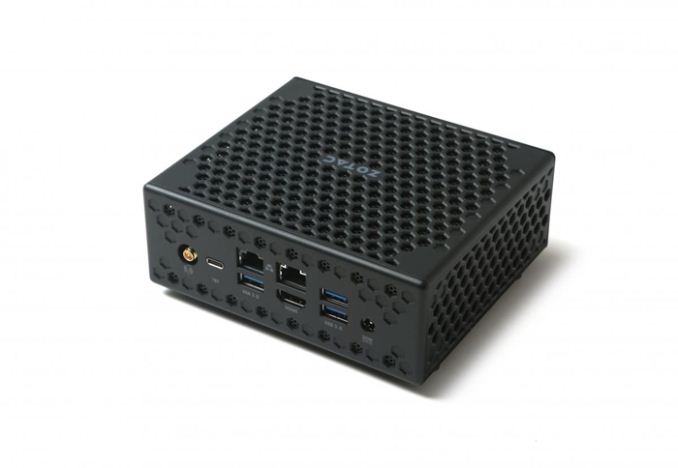






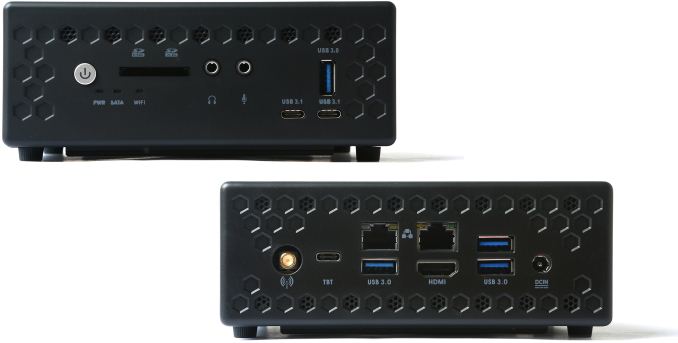

























 Quote
Quote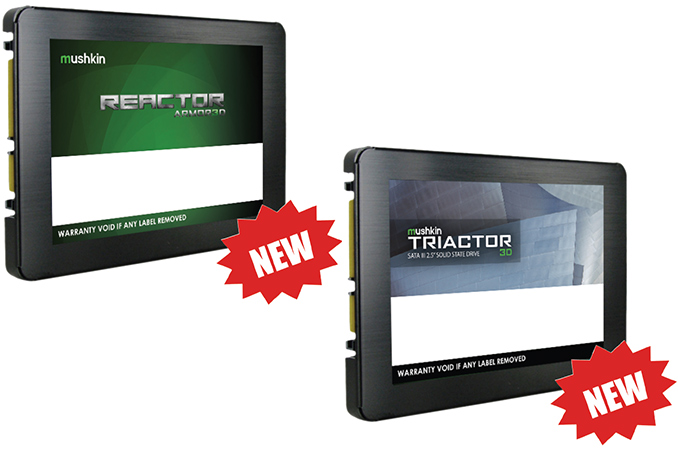
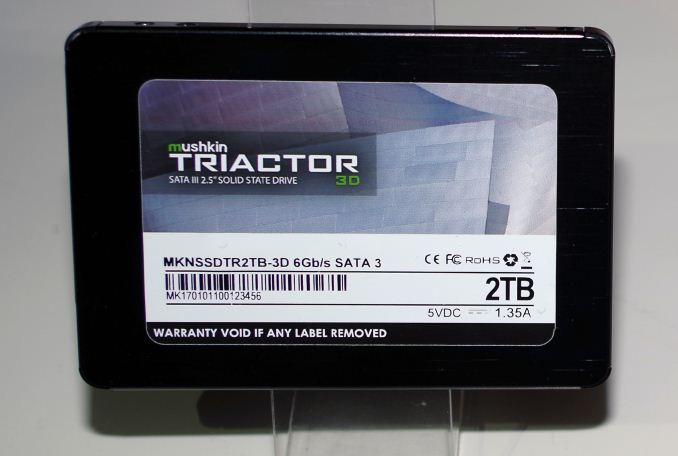







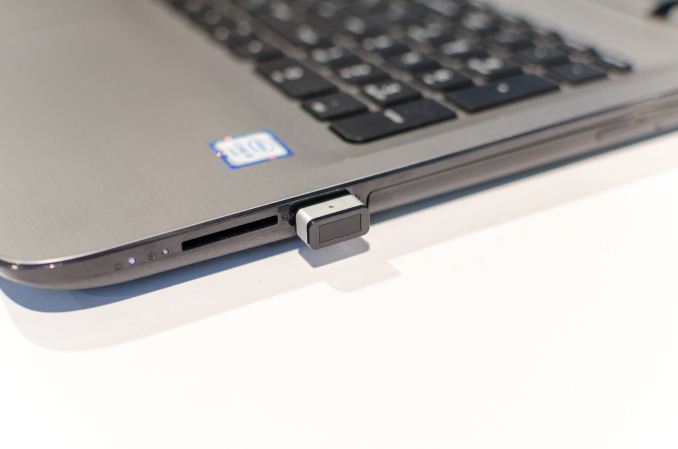

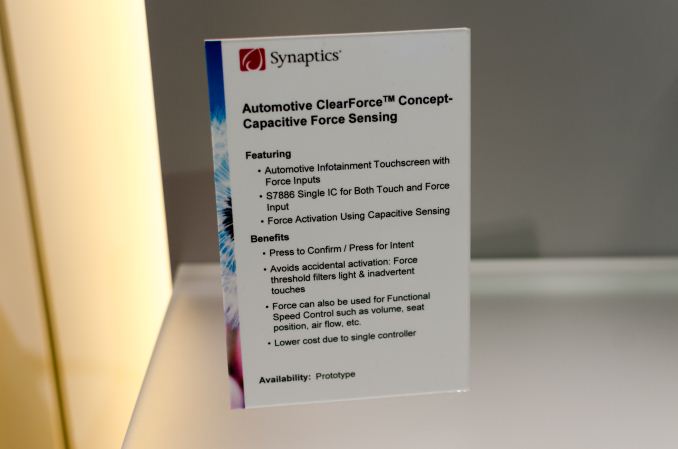
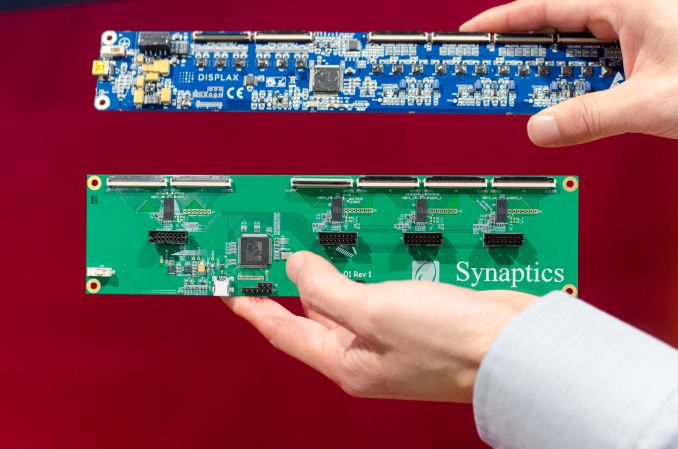
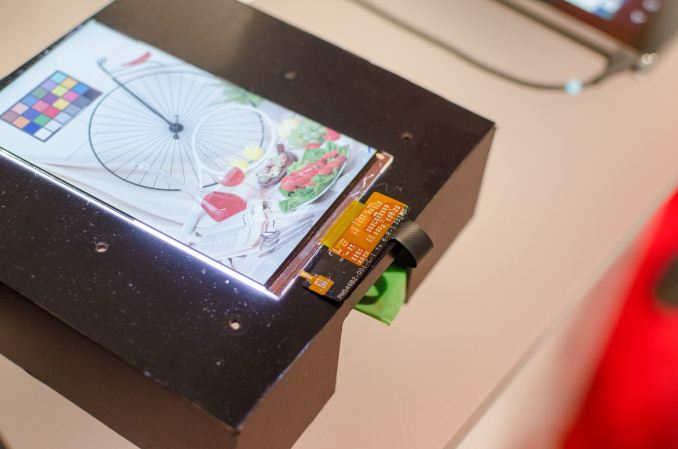
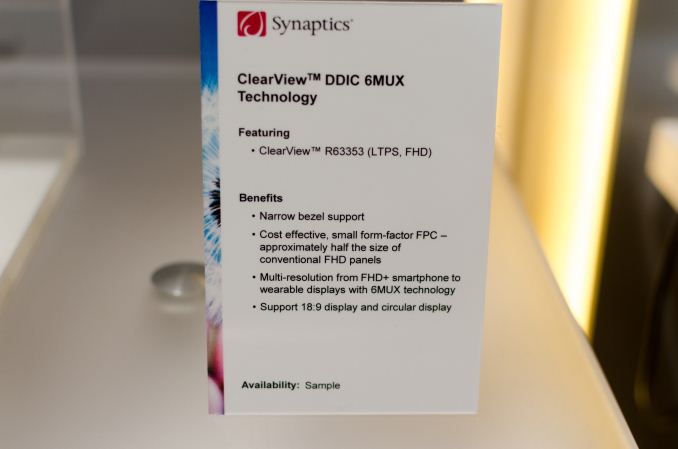
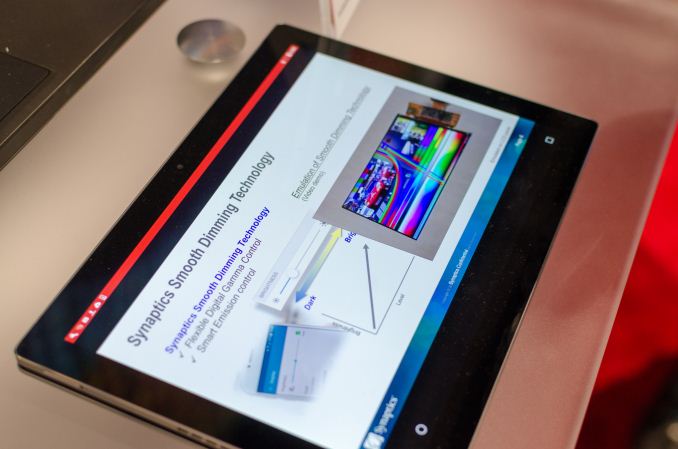
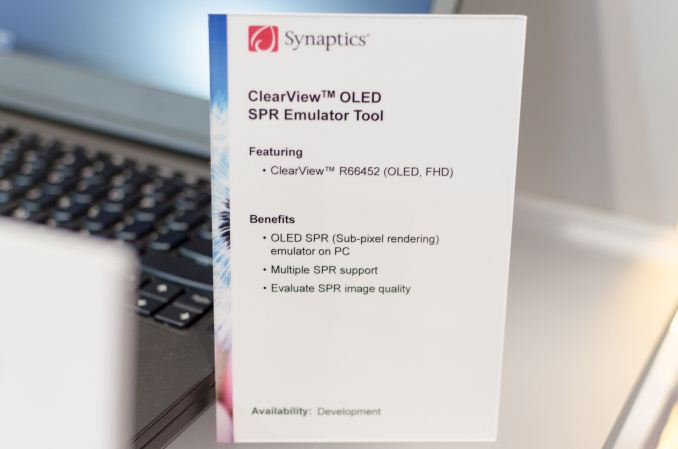









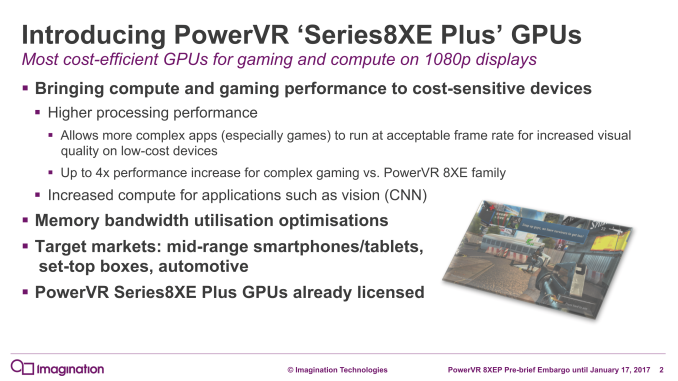
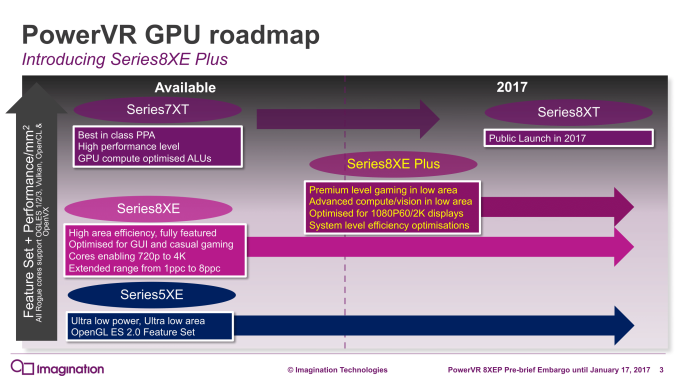
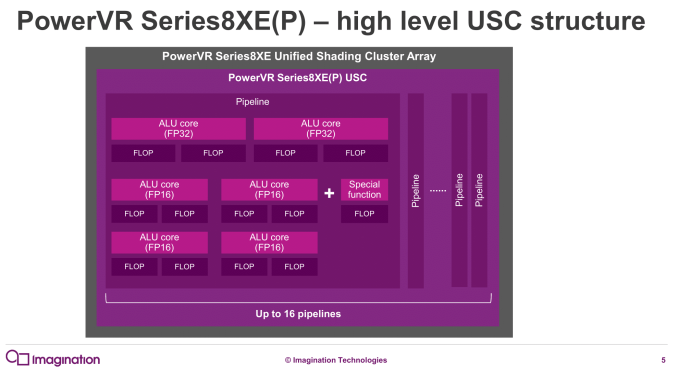
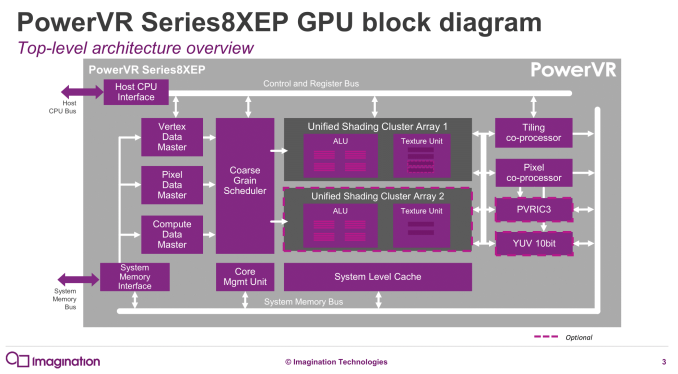
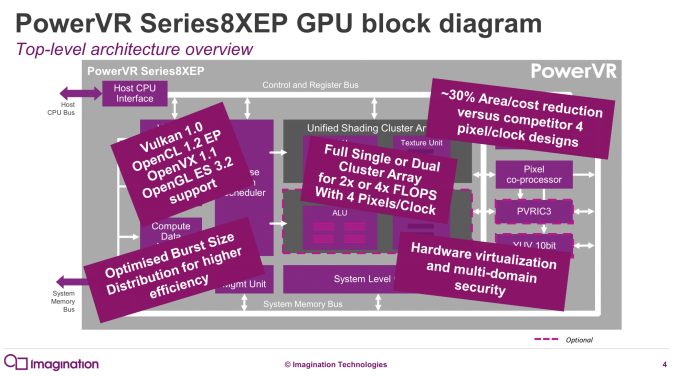
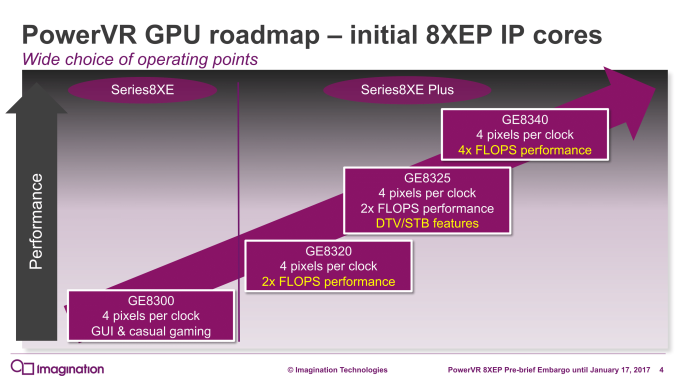

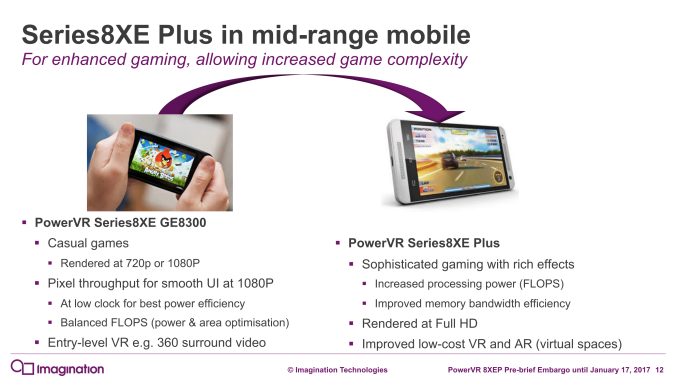
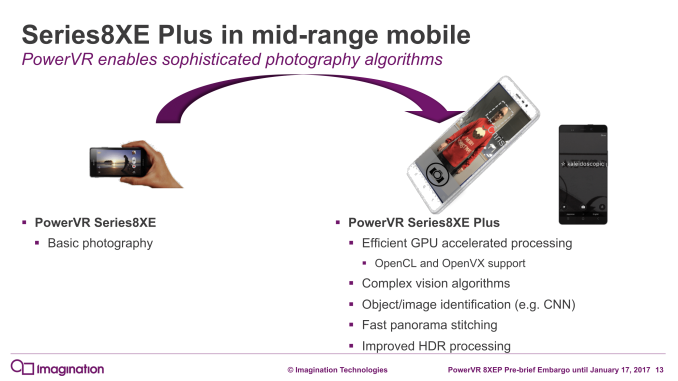
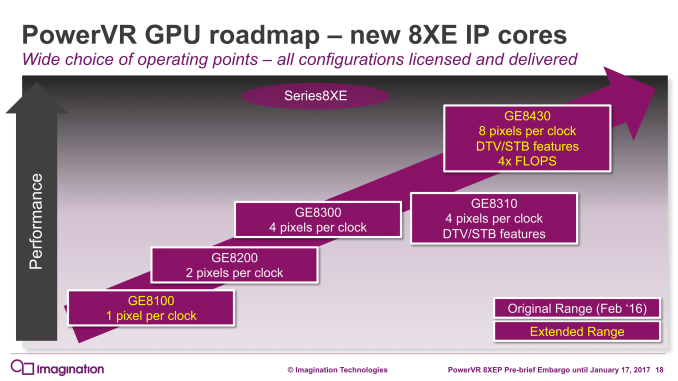
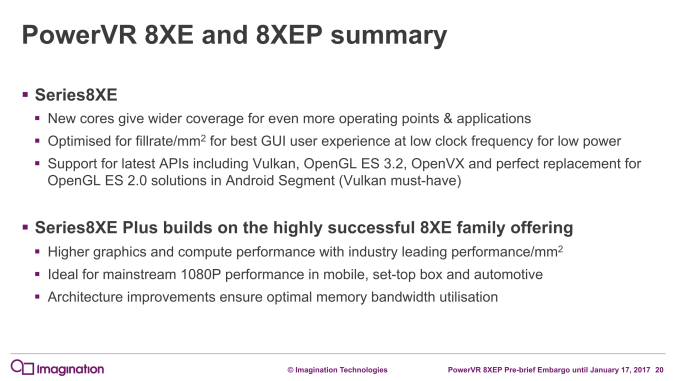
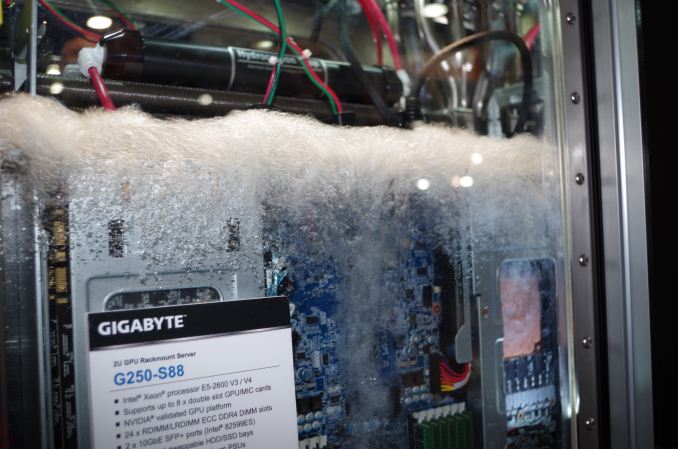
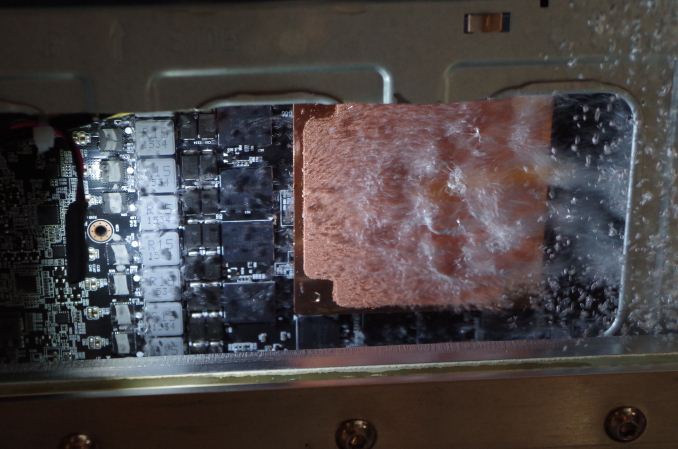
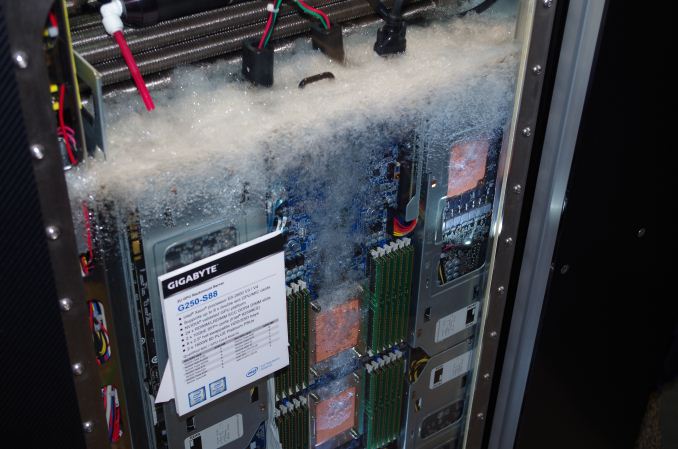


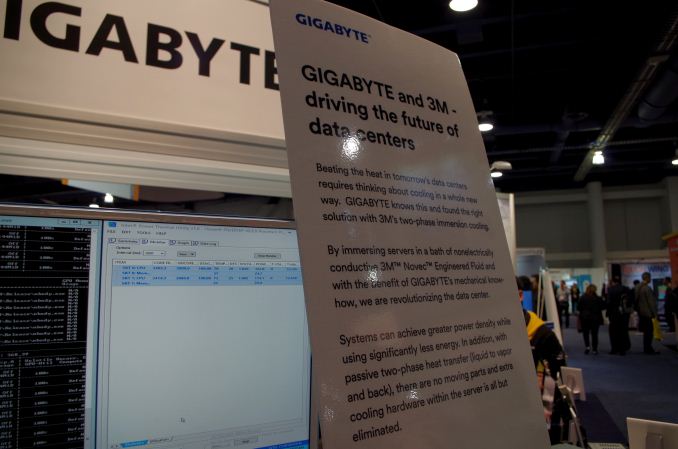






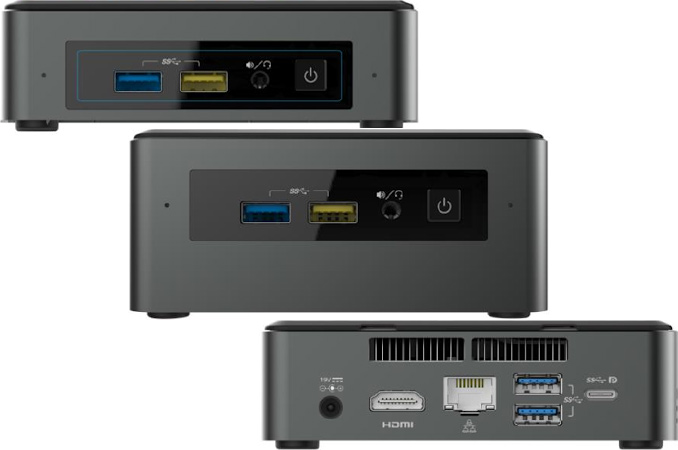
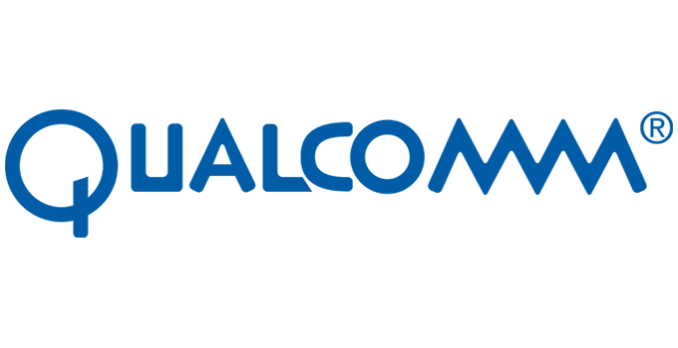
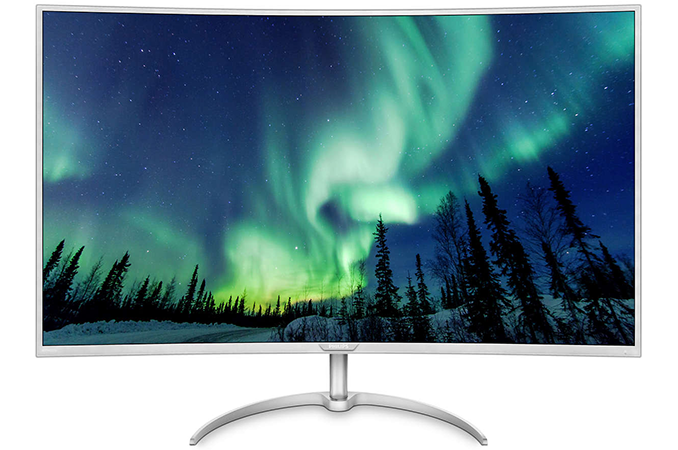
















Bookmarks